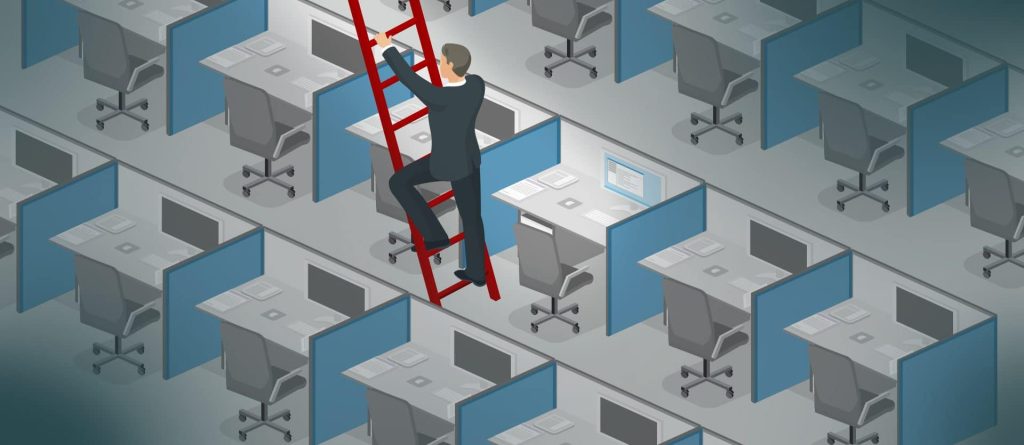
As the threat of a coronavirus pandemic wipes away trillions of market value dollars, the largest mass exodus from the traditional office is underway.
The coronavirus threat pushes the question, “Are we ready to have our employees work from home?” Organizations want to do whatever they can to help contain the spread of the virus.
One of the top healthcare conferences of the year HIMSS canceled at the last minute. Everyone knows why. The canceled HIMSS conference was only the first of a series of conference cancellations this month. How many more conferences are going to be canceled. Only time will tell. A click survey online shows that Google, Intel, FaceBook and Twitter have canceled many of their conference plans. The South by Southwest, or SXSW Conference, has not yet buckled under pressure to cancel.
Andrew Keshner reports in a MarketWatch article that, “As the Coronavirus spreads, companies are increasingly weighing if they should, or even can, have workers do their jobs from home.” The article goes on to announce that Twitter told its 5,000 employees around the world to work from home. The BBC News reports Twitter’s head of human resources Jennifer Christie said, “Our goal is to lower the probability of the spread of the Covid-19 coronavirus for us – and the world around us.” Twitter has been developing ways for employees to work from home. Their mandate moving forward is to enable anyone, anywhere to work at Twitter. Twitter’s began moving to a more mobile workforce before the coronavirus. Now, many companies are taking steps to enable employees to work from home. Asian-based organizations, the ones that could, have already implemented work-from-home options. Several giant multi-national companies such as Citigroup have restricted travel to Asia.
The Best Advice: Plan and Prepare
The media seems to report on the idea that there are only 2 states you can exist in. One is ignorant bliss. The second is a state of panic. There’s a wide territory between those two extremes. People should not panic. They should be aware of what’s going on, have an appropriate level of concern, and respond. People need to consider what’s going on so that they can take action. Managing risk is an important part of life. It’s also an important part of leading a business. Understand the risk. Understand what might happen, and make decisions to keep business moving.
Centers for Disease Control, or CDC, has announced they can’t contain the coronavirus. So that means we’re down to implementing mitigation strategies. This means the CDC is going for non-pharmaceutical interventions (NPIs). This translates to things like closing schools. Mitigating strategies also include preventing people from attending large gatherings. If necessary, issue self-imposed quarantine orders. If self-imposed quarantines don’t work, CDC will issue a contained quarantine order. This means there’s no choice in the matter.
The CDC recommends that companies encourage telework. “For employees who are able to telework, the supervisor should encourage employees to telework instead of coming into the workplace until symptoms are completely resolved. Ensure that you have the information technology and infrastructure needed to support multiple employees who may be able to work from home.” There have been technologies enabling employees to work remotely for some time now. And the interest has grown over the years. It has been a matter of just deciding to offer that flexibility to your employees. Managers have to determine the ratio of working in the office with working at home. It’s more of a leadership decision rather than any limitation of the technology. But the coronavirus threat will certainly act as a catalyst accelerating the adoption of remote collaboration tools. Most companies will be forced to have their employees stay home. Microsoft has announced free upgrades. Office 365 users can now make full use of the video conferencing and recording features of Microsoft Teams.
Businesses can replace in-person meetings with video and increase networking options. Now is a good time for businesses of all kinds to start preparing. If you don’t have the infrastructure already in place, start planning it. Most organizations are not prepared for wide-spread enablement of remote departments. Many are still evaluating requirements and solutions. Workers can work as effectively at home than in the office. Research indicates employees are even more productive working from their home offices.
Moving to The Cloud Has never Made More Sense Than Now
Cloud technology and remote workspaces enable organizations to be flexible with their staff. It’s also an attractive incentive while recruiting talented employees. Astute business leaders want to be in a better position to offer remote collaboration tools to their employees. They want to establish parameters in which work-from-home culture thrives. Jennifer Howe, VP of SMMA an architectural firm in Boston, and acting president of the ACEC Massachusetts said,” Remote workspaces are invaluable these days. You can’t recruit and retain talent without that kind of flexibility.”
A recent article on the Fortune website calls it the “world’s largest work-from-home experiment.” There are millions of businesses all over the world trying to stay productive amidst this growing crisis. The article goes into detail on the level of upheaval for companies. This is particularly true in Southeast Asian countries. “One of the most unsettling factors for employees is the rapidly-changing impact of the virus. It is prompting daily changes in corporate directives. We’re seeing that kind of impact in the states as more and more cities declare a state of emergency.

A giant experiment is underway to see how well new technologies can enable successful mass remote working for employees.
Managers worry the exodus from the office will lower productivity. There have been many studies done to support that the exact opposite is true. Productivity doesn’t go down. It goes up. The 2017 Stanford University Research is often quoted. That study found a 13% increase in productivity. A study conducted at the U.S. Patent and Trademark Office showed remote workers had a 4.4% increase in output. The consulting firm Deloitte did a recent survey that found 82% of white-collar workers using flexible work options.

Unlike companies that are designed from the start to hire work-from-anywhere employees, traditional in-office companies have to decide how this will work. Management has to set parameters on how remote work happens.
What Does Remote Work Look Like?
Unlike companies that are designed from the start to hire work-from-anywhere employees, traditional in-office companies have to decide how this will work. Management has to set parameters on how remote-work happens. They have to communicate to their employees what the expectations are. How will the team stay in contact with each other throughout the day? What is the level of responsiveness needed? Does your staff need to access robust programs like Autocad, Maya 3D, or Adobe After Effects? If so, then how, on a technical level, is that going to happen? For example, GPU hungry programs will need to be hosted on a virtual server. The work-in-progress files will have to be stored in some central location. This is also something that isn’t accomplished overnight. Now is a good time to start having those discussions.
The worst thing you could do is not do anything. Business leaders shouldn’t ignore the situation as it continues to escalate. Ask yourself, if this continues, would your company be able to operate productively. To what extent will your company be forced to stop its activity altogether?
At some point, we are all going to enter the coronavirus tunnel and make it through to the other side. The collective experience will force us to redefine the way we work. We will consider how we interact with each other. Who operates as a self-starter? Who needs closer supervision?

Alvin Toffler was a writer, businessman, and futurist He envisioned the digital revolution long before it happened and foresaw the remote workforce as an inevitable 21st Century trend.
The idea of remote work is not a new one. It goes back 50 years. Futurist writer Alvin Toffler wrote about remote work in his 1980 book THE THIRD WAVE. “When we suddenly make available technologies that can place a low-cost “work station” in any home, providing it with a “smart” typewriter, perhaps, along with a facsimile machine or computer console and teleconferencing equipment, the possibilities for home work are radically extended.”
Cloud technology enables a home computer…a “low-cost workstation” as Toffler calls it, or any mobile device for that matter. The home computer, smartphone, or tablet essentially serves as a dumb terminal. The processing power actually comes from a virtual desktop. For all practical purposes, it’s just like working from your office. You have access to the same emails, the same software applications, and the exact same files.
Right now, the coronavirus is forcing us to reconsider work-from-home scenarios. Moving personnel to a more comfortable and safer work-from-home environment has its benefits. For some businesses, this means building some kind of infrastructure.
I’d like to close with a question posed near the end of the Forbes article. “If you are an employer and you have the power to offer greater freedom to your workers, should you not being thinking about how to do so?”

